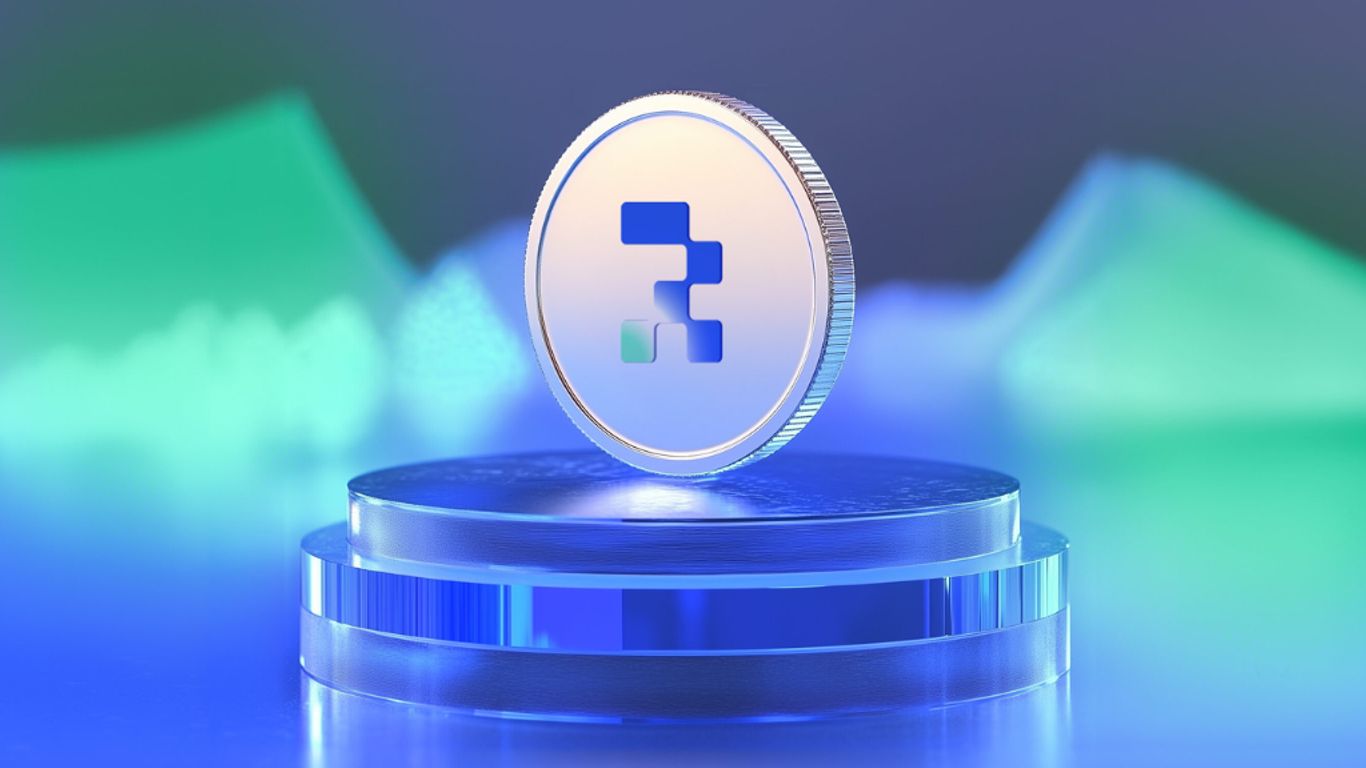In today's world of finance, the concept of tokenized bonds is changing how we think about and invest in debt. By using blockchain technology, these digital bonds offer new opportunities for investors and issuers alike. This article will explore what tokenized bonds are, how they work, and their benefits compared to traditional bonds. We'll also look at the technology behind them, the regulatory environment, and their potential impact on the global financial landscape.
Key Takeaways
- Tokenized bonds are digital versions of traditional bonds that utilize blockchain for security and transparency.
- They provide benefits like lower costs, increased liquidity, and global access for investors.
- Smart contracts automate processes, making transactions faster and more efficient.
- Tokenized bonds can be traded 24/7, unlike traditional bonds that have set trading hours.
- The future of tokenized bonds looks promising, with potential for greater financial inclusion and innovation.
Understanding Tokenized Debt Instruments
Tokenized debt instruments are changing how we think about traditional bonds. These digital versions of bonds use blockchain technology to represent ownership and make trading easier. Here are the main types of tokenized debt instruments:
Tokenized Bonds
- Tokenized bonds are digital versions of traditional bonds.
- They can be traded on blockchain platforms, making them more accessible.
- Each token represents a fraction of the bond, allowing for smaller investments.
Asset-Backed Tokens
- These tokens are backed by physical assets, providing security to investors.
- They can include real estate, commodities, or other valuable items.
- This backing helps to reduce risk for investors.
Decentralized Loans
- Decentralized loans are issued and managed through smart contracts on a blockchain.
- They allow for peer-to-peer lending without traditional banks.
- This can lead to lower interest rates and faster processing times.
Tokenized debt instruments are revolutionizing finance by making investments more accessible and efficient for everyone.
In summary, tokenized debt instruments like tokenized bonds, asset-backed tokens, and decentralized loans are reshaping the financial landscape, offering new opportunities for investors and enhancing market efficiency.
Benefits of Tokenized Debt Over Traditional Methods
Tokenized debt instruments offer several advantages compared to traditional methods. Here are some key benefits:
Increased Liquidity
One of the primary benefits of tokenization is increased liquidity. Tokenized bonds can be traded 24/7 on digital platforms, allowing investors to buy and sell them anytime. This is a big change from traditional bonds, which have limited trading hours. This increased liquidity helps investors access their money more easily.
Lower Costs
Tokenization can lead to lower costs for investors. By reducing the need for middlemen, transaction fees can be cut down significantly. This makes tokenized bonds a more cost-effective option for many investors.
Global Access
Tokenized debt instruments allow investors from anywhere in the world to participate. This broadens the market and makes it easier for more people to invest. With tokenization, even small investors can join in, which was often difficult with traditional bonds.
Tokenization is a game-changer, making investments more accessible and efficient for everyone.
In summary, tokenized debt instruments are transforming the way we think about investing. They provide increased liquidity, lower costs, and global access, making them an attractive option for many investors.
Blockchain Technology in Tokenized Debt
Overview of Blockchain Technology
Blockchain technology is a secure and transparent way to record transactions. It acts like a digital ledger that keeps track of all transactions across a network. This means that every time a transaction happens, it is recorded in a way that cannot be changed. This is important for tokenized debt instruments because it helps ensure that ownership and transaction history are clear and trustworthy.
Importance of Smart Contracts
Smart contracts are self-executing contracts with the terms of the agreement directly written into code. They automatically enforce and execute the terms of a deal without needing a middleman. This reduces costs and speeds up transactions. For tokenized debt instruments, smart contracts can help automate payments and ensure that all parties meet their obligations.
Security and Transparency
One of the biggest advantages of using blockchain for tokenized debt instruments is the increased security and transparency it offers. Each transaction is recorded on a public ledger, making it easy to verify ownership and transaction history. This reduces the risk of fraud and builds trust among investors.
Tokenization is a game-changer, making investments more accessible and efficient for everyone.
In summary, blockchain technology plays a crucial role in the development of tokenized debt instruments by enhancing security, transparency, and efficiency. This makes it easier for investors to participate in the market and for companies to raise funds.
How Tokenized Bonds Work
Issuance and Tokenization Process
The process of creating tokenized bonds starts with issuing a traditional bond. This bond is then converted into digital tokens that represent parts of the bond. Smart contracts play a crucial role here, as they automatically manage the bond's terms, like interest payments and maturity dates. Here’s how it works:
- Choose the Bond: Decide on the type of bond to tokenize, such as corporate or government bonds.
- Create Smart Contracts: Write the rules for the bond in code, which will automate payments and other functions.
- Tokenize the Bond: Convert the bond into digital tokens that represent ownership.
- Compliance Checks: Ensure that all legal requirements are met before issuing the tokens.
- Offer to Investors: Present the tokenized bonds to potential buyers through a digital platform.
Trading and Liquidity
Once tokenized, these bonds can be traded on various digital platforms. This allows for:
- 24/7 Trading: Investors can buy and sell at any time, increasing market activity.
- Fractional Ownership: Investors can purchase smaller portions of a bond, making it easier for more people to invest.
- Increased Liquidity: The ability to trade anytime enhances the overall liquidity of the market.
Role of Smart Contracts
Smart contracts are essential in the world of tokenized bonds. They help by:
- Automating Payments: Ensuring that interest and principal payments are made automatically.
- Reducing Costs: Cutting out middlemen leads to lower transaction fees.
- Building Trust: Since the terms are coded, all parties can trust that the rules will be followed.
Tokenized bonds are reshaping the investment landscape, making it easier and more efficient for everyone involved.
This innovative approach to bonds not only enhances accessibility but also promotes a more inclusive financial environment, allowing a wider range of investors to participate in the market.
Technological Infrastructure Behind Tokenized Bonds
Blockchain Technology
Blockchain technology is the backbone of tokenized bonds. It is a decentralized digital ledger that securely records transactions. This technology ensures that every transaction is transparent and cannot be altered. Here are some key benefits of using blockchain for tokenized bonds:
- Increased Security: Transactions are encrypted and stored across multiple locations, making them hard to hack.
- Transparency: All transactions are visible to authorized users, which builds trust among investors.
- Efficiency: Transactions can be processed faster without the need for intermediaries.
Smart Contracts
Smart contracts are self-executing contracts with the terms written directly into code. They automate processes and ensure that all parties follow the agreed terms. Here’s how they enhance the bond market:
- Automation: Payments and transactions happen automatically when conditions are met.
- Reduced Costs: By eliminating middlemen, costs associated with transactions are lowered.
- Trust: Since the contract is coded, all parties can trust that the terms will be followed.
Digital Platforms for Trading
Digital platforms are essential for trading tokenized bonds. They allow investors to buy and sell bonds easily. Some features of these platforms include:
- User-Friendly Interfaces: Easy navigation for all types of investors.
- 24/7 Trading: Investors can trade at any time, increasing liquidity.
- Global Access: Investors from different regions can participate, broadening the market.
The integration of these technologies is transforming the bond market, making it more accessible and efficient for everyone involved.
Regulatory Landscape for Tokenized Bonds
Existing Regulations
The rules for tokenized bonds can vary greatly around the world. In the U.S., the SEC has set guidelines that affect how these bonds are issued and traded. In Europe, regulations like MiFID II and MiCA focus on protecting investors and ensuring transparency.
Compliance Challenges
Many companies face difficulties in meeting legal requirements. Some of these challenges include:
- Understanding various regulations in different countries.
- Making sure that tokens follow securities laws.
- Dealing with complex rules about anti-money laundering (AML) and know your customer (KYC).
Future Regulatory Developments
As tokenization becomes more popular, we can expect clearer regulations to come out. Governments and regulatory bodies are working to create frameworks that will help guide the industry. This will likely lead to increased investor confidence and broader adoption of tokenized debt instruments.
The regulatory landscape for tokenizing bonds is complex and evolving. Governments and regulatory bodies worldwide are grappling with how to adapt to these changes while ensuring investor protection and market integrity.
Key Features of Tokenized Bonds
Tokenized bonds come with several unique features that make them stand out from traditional bonds. These features leverage blockchain technology to enhance accessibility, transparency, and efficiency in the bond market.
Digital Representations
- Tokenized bonds are represented digitally, meaning ownership is recorded on a blockchain instead of on paper. Each token signifies a part of the bond's value, making ownership clear and easy to understand.
- This digital nature allows for fractional ownership, enabling more people to invest in smaller amounts.
Increased Liquidity
- Tokenized bonds can be traded more easily than traditional bonds. Investors can buy and sell these tokens on digital platforms, which opens up the market to a wider range of participants.
- The ability to trade 24/7 means that investors can access their funds whenever they need, unlike traditional bonds that have limited trading hours.
Market Access Round-the-Clock
- Unlike traditional bond markets, which operate during specific hours, tokenized bonds can be traded anytime, anywhere. This constant availability allows for quicker transactions and better market responsiveness.
Tokenized bonds are revolutionizing the way we think about investing, making it easier and more efficient for everyone involved.
In summary, the key features of tokenized bonds include their digital representation, increased liquidity, and round-the-clock market access. These aspects not only enhance the investment experience but also promote greater financial inclusion.
Comparing Traditional and Tokenized Bonds
Physical vs. Digital Representation
Traditional bonds are physical documents that represent a loan from an investor to an issuer, like a company or government. These bonds come with a certificate that shows important details such as the interest rate and maturity date. In contrast, tokenized bonds are entirely digital and exist on a blockchain. Each token represents a part of the bond's value, making it easier to trade and manage.
Ownership and Transaction History
With traditional bonds, ownership is proven through physical certificates, which can be lost or damaged. Tokenized bonds, however, use blockchain technology to create a secure and unchangeable record of ownership. This means that every transaction is visible and can be tracked easily, reducing the risk of fraud.
Settlement Processes
The process of settling transactions for traditional bonds can take several days, often requiring intermediaries like banks. Tokenized bonds allow for faster settlements because they can be traded 24/7 on digital platforms. This means investors can buy and sell them anytime, making the market more efficient.
Tokenized bonds are changing the landscape of fixed income investments, making them more efficient and accessible for all investors.
In summary, tokenized bonds offer a modern approach to investing, providing benefits like faster transactions, better security, and easier access for investors.
Future of Tokenized Bonds
Evolution of Financial Markets
The rise of tokenized bonds is a major change in finance. As technology improves and rules become clearer, these bonds could become a common choice for many investors. This shift may lead to a more inclusive market where more people can invest.
Integration with DeFi
Tokenized bonds are likely to connect with Decentralized Finance (DeFi). This means they could work alongside other digital assets, making it easier for investors to manage their portfolios. This integration can lead to new opportunities for both issuers and investors.
Potential Challenges and Opportunities
While the future looks bright, there are challenges to consider:
- Regulatory Issues: Different countries have different rules, which can create confusion.
- Market Volatility: Prices can change quickly, making it hard to predict returns.
- Security Risks: Smart contracts can have bugs that might lead to asset loss.
The journey of tokenized bonds is just beginning, and it holds the promise of making investments more accessible and efficient for everyone.
In summary, the future of tokenized bonds is full of potential. With the right support and understanding, they could reshape how we think about investing in debt instruments.
Global Impact of Tokenized Debt
Tokenized debt instruments are changing the way we think about finance on a global scale. This innovation is making investments more accessible and inclusive. Here’s how:
Financial Inclusion
- Tokenized debt allows for fractional ownership, meaning more people can invest with smaller amounts of money.
- This opens up opportunities for individuals who previously couldn’t afford to invest in traditional bonds.
- It encourages a more diverse group of investors to participate in the market.
Cross-Border Investments
- Tokenized bonds can be traded globally, breaking down geographical barriers.
- Investors from different countries can easily access and invest in various markets.
- This leads to a more interconnected financial system, benefiting economies worldwide.
Market Democratization
- The use of blockchain technology ensures transparency and security, which builds trust among investors.
- With lower costs and increased liquidity, more people can participate in the bond market.
- This democratization of finance can lead to a more stable and resilient economy.
Tokenization is reshaping the financial landscape, making it easier for everyone to invest and participate in the economy.
Case Studies of Tokenized Debt
HSBC's Green Bond
HSBC made headlines with its $740 million green bond for the Hong Kong Monetary Authority. This was the first multi-currency digital bond issue and is considered the largest digital bond ever issued. This initiative showcases how traditional banks are embracing tokenization to enhance their offerings and attract a broader range of investors.
European Investment Bank Initiatives
The European Investment Bank (EIB) has also been active in the tokenized debt space. They have issued several smaller digital bonds over the past 18 months, collaborating with major financial institutions like Euroclear and Goldman Sachs. These efforts highlight the growing trend of tokenized bonds in Europe, aiming to improve market access and liquidity for investors.
JP Morgan's Digital Municipal Bonds
JP Morgan is leveraging its Onyx platform to introduce digital municipal bonds to investors. This move is seen as a significant innovation in the financial community, promoting greater participation and accessibility in the bond market. By utilizing blockchain technology, JP Morgan aims to streamline the bond issuance process and enhance liquidity for investors.
The rise of tokenized debt instruments is reshaping the financial landscape, making it easier for both issuers and investors to engage in the market.
These case studies illustrate the potential of tokenized debt to transform traditional finance, offering new opportunities for investment and participation in the bond market.
Final Thoughts on Tokenized Debt
In conclusion, tokenized bonds are changing the way we think about investing in debt. They make it easier for people to buy and sell bonds, which can help more people get involved in investing. With the use of blockchain, these digital bonds are secure and clear, making it easier to track who owns what. As technology continues to grow, we can expect tokenized bonds to become a normal part of investing, giving everyone a chance to participate in the financial world.
Frequently Asked Questions
What are tokenized bonds?
Tokenized bonds are digital versions of traditional bonds that exist on a blockchain. They represent ownership of a bond in a more modern and flexible way.
How do tokenized bonds work?
They work by turning a traditional bond into digital tokens. Smart contracts on the blockchain manage these tokens, making the process easier and faster.
What are the benefits of tokenized bonds?
Tokenized bonds offer benefits like lower costs, easier trading, and the ability for anyone around the world to invest.
What is blockchain technology?
Blockchain is a secure digital ledger that records transactions. It ensures that all transactions are transparent and cannot be changed.
What are smart contracts?
Smart contracts are automated agreements that execute themselves when certain conditions are met. They help ensure that all parties follow the rules.
Can anyone invest in tokenized bonds?
Yes! Tokenized bonds allow people from anywhere in the world to invest, making it easier for more people to participate.
How does tokenization improve liquidity?
Tokenization allows for smaller investments, making it easier to buy and sell parts of a bond. This increases trading activity and market access.
What challenges do tokenized bonds face?
They face challenges like regulatory issues and the need for people to understand this new technology. But they also have many opportunities for growth.




